Scientific name Ariocarpus Rank Genus | Family Cactaceae Higher classification Cacteae | |
 | ||
Lower classifications Ariocarpus fissuratus, Ariocarpus retusus, Ariocarpus kotschoubeyanus, Seven star cactus, Ariocarpus agavoides | ||
Re potting my ariocarpus cactus plants ariocarpus retusus ariocarpus agavoides
Ariocarpus is a genus of 8 species of succulent, subtropical plants of the Cactaceae family.
Contents
- Re potting my ariocarpus cactus plants ariocarpus retusus ariocarpus agavoides
- Ariocarpus retusus
- Selected species
- Synonyms
- Description
- Cultivation
- References
The name comes from the ancient Greek "aria" (an oak type) and "carpos" (=fruit) because of the resemblance of the fruit of the two genus in acorn form. Another possibility for the origin of the name is the work Scheidweiler did on the tree Sorbus aria at the time he described the genus Ariocarpus. He might have meant the fruits of Ariocarpus plants look like the fruits of the Sorbus aria.
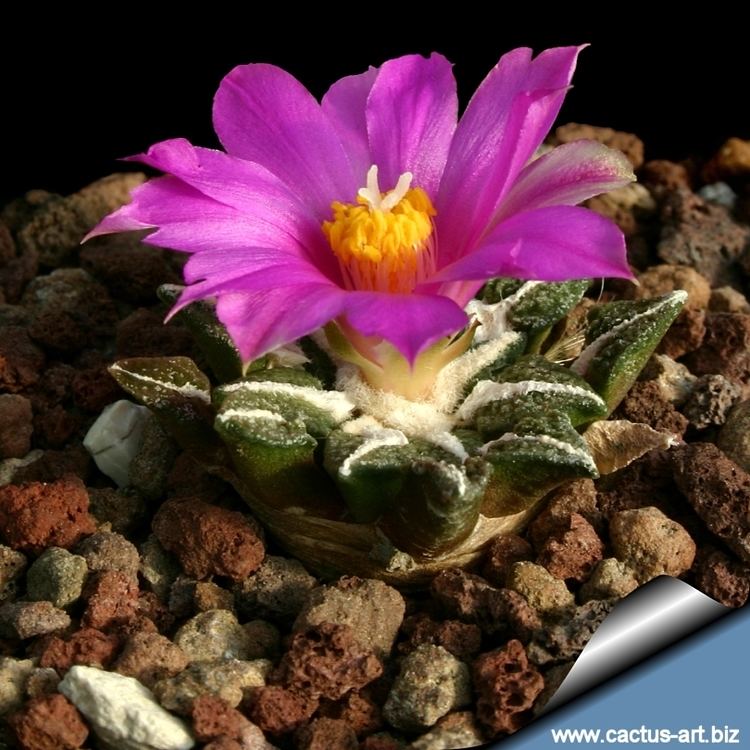
It comes from limestone hills of Rio Grande in the south of Texas (Ariocarpus fissuratus) and also the north and the center of Mexico (all other species including A. fissuratus forms known as A. loydii and A. fissuratus var. intermedius) with strong sunshine exposures.
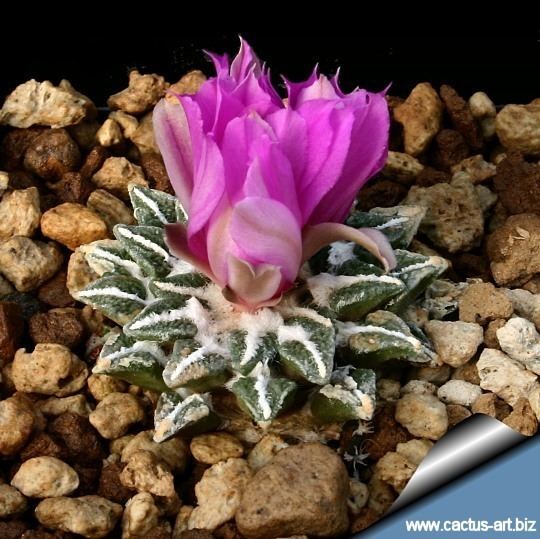
Ariocarpus are endangered and quite rare in the wild.
Ariocarpus retusus
Selected species
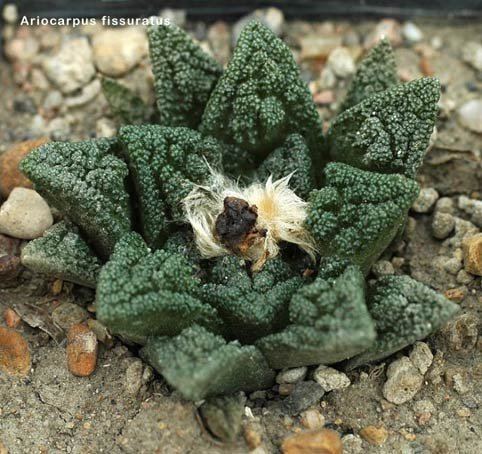
Synonyms
Description
The plant is semi buried with a thick central root.
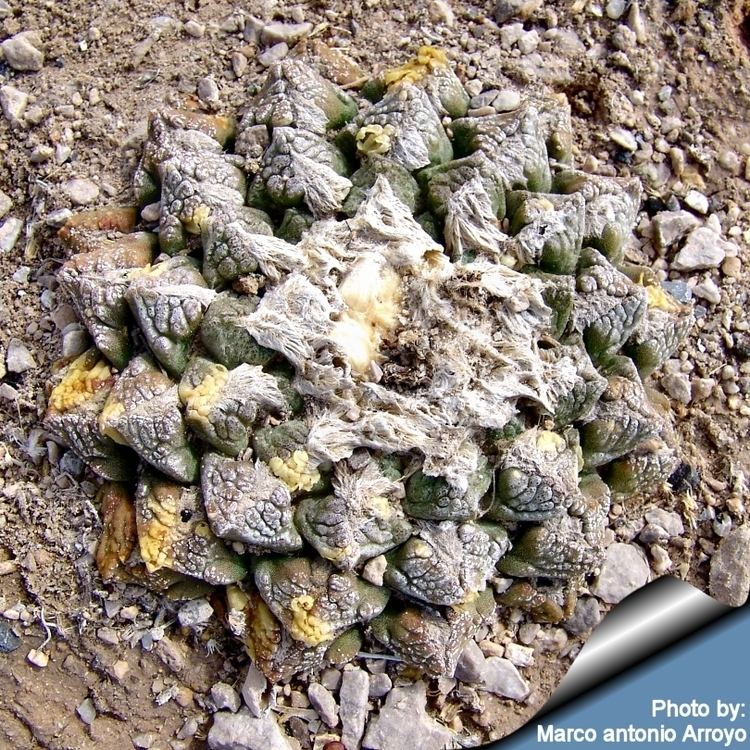
The aerial part is flattened with a diameter of 6–12 cm, triangular tubercules overlapping with transverse wrinkles. The plant is totally without thorns and of gray color. It is easily hidden in its natural environment.
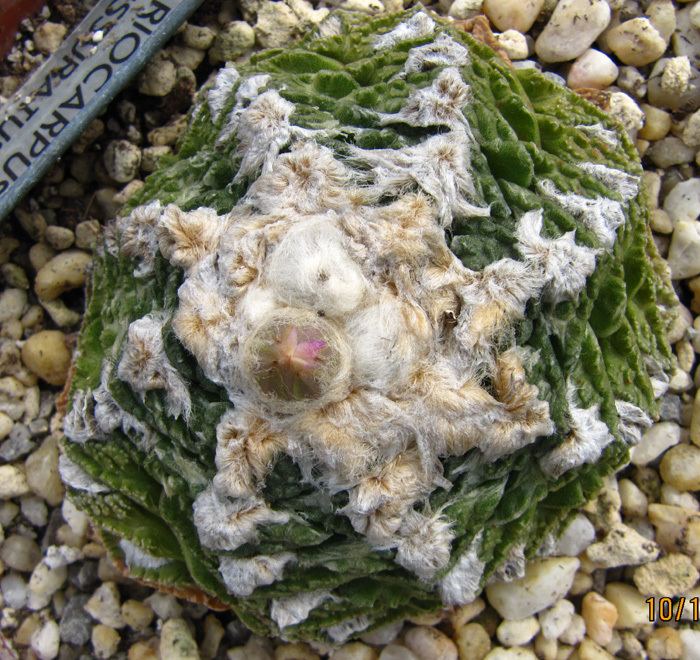
The plant apex contains a woolly structure from which emerge big pink or yellow flowers, but only after several years.
The plant contains bitter and toxic alkaloids such as hordenine. These protect the plant against consumption by herbivores.
Cultivation
While very slow growing, a number of species, A. retusus for instance, are not particularly difficult to keep.

Ariocarpus species have a tuberous root system and are quite sensitive to soil conditions, preferring sharply draining loam based soils with minimal humus. Care should be taken to avoid overwatering, allowing the soil to dry out completely between waterings. Plants require water only during periods of summer growth and should be kept perfectly dry overwinter, with a minimum temperature of 12 °C, although certain species can cope with considerably cooler conditions.
Propagation is by seed and, although slow, is not necessarily difficult.
Ariocarpus seedlings are often grafted on Pereskiopsis in order to considerably increase their growth rate, more mature plants may be regrafted onto Echinopsis, Eriocereus or Opuntia compressa for better hardiness, though such plants often bear little resemblance to ungrafted specimens.
